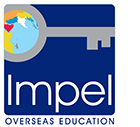Your resume is intended to be a verbal picture of you, designed both to give an employer your factual data and to create and leave a favorable impression. It connects you, the prospective employee, with the employer, so it must be written in a language commonly understood by both. Put yourself in the shoes of the person who will be reading your resume and write it from that perspective
We could throw some frightening statistics at you, like employers spend less than a minute screening a resume and then discard 95-99% of those screened. Rather than become discouraged by such ominous numbers, however, recognize the importance of attracting the employer’s interest through a concise, attractive presentation. It is crucial that your resume reflects your personality and individuality, yet there are general principles which should serve as guidelines regardless of your choice of format or style. It is also important to remember that resumes may be “general” (useful for seeking positions in a variety of career fields) or “job specific” (a stated objective is usually present at the beginning of this type of resume). Resumes that are job specific tend to get the best results. Often, people have more than one resume; each emphasizes particular skills and experiences.
Length
A short, concise one-page resume is preferable. However, if you have an exceptional amount of relevant experience and are seeking a job in the public sector, a two-page resume may be more appropriate. If you do use a second page, make sure your major accomplishments are evident, and if at all possible, on the first page.
Descriptions
Do’s
- Use phrases starting with action verbs
- Use language that creates vivid word pictures for potential employers
- While being descriptive, keep explanations as concise as possible
- Use quantities, amounts, and dollar values whenever they enhance the description of your accomplishments
- Keep your tenses and format consistent according to the time in which you completed the responsibility
Dont
- Use the personal pronoun “I” (There are occasional exceptions to this rule)
- Use phrases like “Responsible for” and “Was in charge of.” Do not say what you were supposed to do, say what you did
- Include personal data such as height, weight, health, age or marital status
- Include a photograph unless requested
- Include salary information or address of prior employer; the name of the company and city and state where it is located is sufficient
- Have any typos or any grammatical errors
General Appearance
Since the initial contact between your resume and the employer is so brief, your resume must be visually interesting.
Font:
Always use a simple easy-to-read font such as Times, Palatino or Geneva. As a general rule, no font size on your resume should be smaller than 10 point. Your name should be the largest font size on your resume. A good range, depending on which font you use, is between 16 and 22 points.
Margins:
Your margins depend on how much information you are trying to put onto your resume. Left and right side margins should always be the same size. As a general rule, margins should be no smaller than .5 inches and no larger than 1 inch.
Heading:
List your name and both a campus and a permanent address and phone number at the top of your resume page. Your name can be between 16 pt and 22 pt size font; you want potential employers to remember who you are. After graduation only your permanent address is necessary. If you check e-mail regularly, list this address as well.
Format:
Job titles and places where you have worked may be emphasized in bold type, CAPITAL LETTERS, italics, or be underlined. Keep in mind that consistency plays a vital role in a positive appearance. If you plan to highlight your “Education” heading with bold type and capitalization, be sure that your corresponding titles (e.g. Objective, Employment, Activities) are highlighted in the same fashion. Beware, however, of overemphasizing. In a sea of capital letters, bold type, and underlined words, nothing distinguishes itself from the rest.
Printing
- Word processing is preferable because of its flexibility. Always use a laser printer for your copies. Be sure to use clean and simple typefaces like Times New Roman, Palatino, or Helvetica on resume quality paper. Once again, consistency is important–do not combine different typeface styles (e.g. Times New Roman, and Helvetica; however, Times New Roman bold and Times Roman italic are fine together)
- Your resume should be error-free! Proofread carefully. Ask someone else to proofread it, too.
- Always use resume paper which can be purchased at any office supply store. We recommend conservative colors (e.g. white, beige, gray, off white). If you must photocopy, always use white paper for your original copy.



